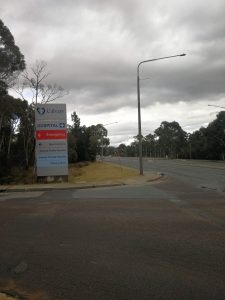Increase aged-care assault reports seen as improvement to system
By JACQUI GARRITY:
Alleged reportable assaults in Commonwealth funded residential aged care facilities have increased by almost 30 per cent since 2008, according to data from the Department of Health and Ageing.
During the 2010-2011 reporting period, the data obtained following a Freedom of Information (FOI) request shows the number of assaults reported in aged care facilities across Australia totalled 1,814. A total of 284 of those reported are considered unlawful sexual contact, while the remaining 1,498 reports relate to an unreasonable use of force. These figures compare to a total of 1,411 reports during 2008-2009 and 1,488 during 2009-2010.
The data shows the numbers are increasing, but government and industry agree this does not reflect a decline in the standard of care and is a sign the Aged Care Act 1997 (the Act) is working. Both the government and Australia’s leading seniors’ organisation, The Council on the Ageing (COTA), however, hold different views about the significance of the figures in relation to dementia patients.
While reportable assaults in aged care facilities appear to be on the rise, the Director of the Office of Aged Care Quality and Compliance, Mal Gibson, believes the data is not always an accurate reflection of the true number of assaults in residential aged care.
“I believe the numbers are accurate in the number of reports that are made,” he said. “The difficulty with these things though is trying to correlate it to whether or not an assault actually took place.”
While Gibson has admitted the department does not know the true number of assaults, he says an increase in the number of those reported does not always represent a real increase in the number of assaults that are occurring, but a greater understanding by service providers of their obligations under the Act relating to compulsory reporting.
“In summary, this requires them [service providers] to report to the Department of Health and Ageing and the police when they receive an allegation of, or suspect on reasonable grounds, a reportable assault has occurred,” Gibson says.
“What we do know is that we’ve got a greater number of reports that are made. That is possibly, and again it’s difficult to prove, but just after the legislative requirement came in we took a fairly strong action against approved providers who failed to make their reports.
“There’s nothing to suggest that there either has been an increase in the incidents of assaults or that increased awareness has resulted in the increased number of reports.”
The National Policy Manager of COTA, Jo Root, says an increase in the data should be considered a good thing.
“I do tend to share the view that the number of cases being reported, when it goes up is actually a sign of success because I think it means people are more alert to what is going on and that means the system is working.
“It’s like having more cases of domestic violence reported is not necessarily a bad thing initially because its showing you’ve got a system that actually picks up problems.
“I think if they [reportable assault] were really on the increase it might show that there’s just not adequate staffing to provide vigilance or training and so there’s nobody observing what people are doing. But with all the best systems in the world you’re never going to eliminate it completely unfortunately but you certainly can take action.”
The Act defines a reportable assault as “unlawful sexual contact, unreasonable use of force, or assault specified in the Accountability Principles and constituting an offence against a law of the Commonwealth or State or Territory that is inflicted on a person receiving residential aged care.”
Gibson says the definition of a reportable assault in the Act is “deliberately non-specific” because providing a rigid definition may “limit its applicability as it can be very dependent on specific circumstances.”
He also suggests the number of reportable incidents may need to be treated with caution as it has been suggested a significant proportion of reports are made by residents suffering from dementia or incontinence, where such residents may report an assault even when this may not be the case.
“The number of dementia residents in aged care is at about 60 to 70 per cent of the population, therefore if everything else was equal, 60 or 70 per cent of the allegations may be made by people with dementia,” Gibson says.
Root disagrees. “Without actually knowing, we could ask the question, well can you prove that? That sounds a glib response to me. You need to drill down and somebody needs to look at the data and say well, ‘first of all how many of them were reported by somebody with dementia’ and also, not everybody with dementia is necessarily making it up, or imagining it.
“Dementia has many stages and it seems to me to be somewhat derogatory to people with dementia to say that they don’t know when they are being abused. I think this is a blame-the-victim type of mentality that isn’t particularly helpful.
“Just because somebody’s got dementia does not mean their report on abuse should be ignored.”
A breakdown of alleged offender data for 2009-10 and 2010-11 shows that almost 64 per cent of assaults are reported against staff.
“One of the things that is quite startling in the data is that a number of the alleged sexual or physical assaults occur between staff and residents,” Gibson says. “To a large extent it’s the nature of the type of care that’s being provided. I mean you’re providing fairly intimate care to people; it doesn’t take too much for someone to say ‘I believe they sexually assaulted me.’
“Similarly, if you get resistive patients they can be difficult to manage and when staff are attempting to restrain them from either hurting themselves or hurting staff, they might be on blood-thinning medications that will bruise just by holding their arm. Therefore either the resident or their families might believe that someone may have been assaulted when in actual fact all they have been is restrained.
“It’s one of these difficult areas. The reason the legislation was brought in was because prior to it the majority of these things were just dismissed. The idea of the legislation was to get this out in the open and leave it to the police to determine whether or not it has occurred.”
The Department’s role is to investigate the circumstances surrounding reportable assaults to ensure all appropriate steps are taken to protect residents. The Department validates the information received and determines whether the approved provider has met their obligations under the Act.
All reportable assaults are also referred to the police who are then responsible for determining whether charges should be laid.
Gibson admits that as long as the reports made are allegations or suspicions of assault, there is nothing the Department can do to bring the numbers down.
“Now we do know in very few cases a charge is ever brought. We don’t have information that is comprehensive, but we know because sometimes it is reported in papers, and from that we do know they [charges] are relatively infrequent,” Gibson says.
Incidents of assault also appear to be relatively infrequent. With 185,559 residential aged care places and 1,814 reports made in the last reporting period, less than one per cent of those receiving aged care in a residential setting have reported an assault.
“That’s not very many is it as a percentage of the number of people that are in residential aged care?” says Root. “This is not justifying it at all but I think we need to keep it in context.
“One of our concerns is whenever stories like this get run it increases the fear factor for people who have loved ones in residential care or are thinking of moving them into residential care.
“I think we just need to be careful that we make sure we stress this is a significant issue, it’s an important issue and we don’t want anybody harmed, but it is a minority issue.
“I mean they’re only alleged assaults, we don’t even know how many of them are real.”



Be the first to comment!